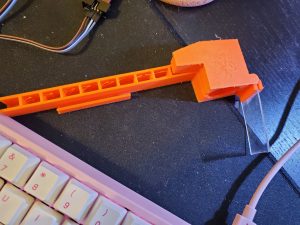Team Status Update for 11/15
Tasks Accomplished
This week we were able to get 4 mics to work with the board, and are now able to start implementing the 4 mic localization algorithms. We also did some optimization on sampling speed (for the mics) and communication speed (for OLEDs via I2c)
Potential Risks
We ran into many issues in our past week, using up a decent amount of our built in slack time. The biggest risk for the coming week is not being able to get our hardware ironed out. We would like to freeze our hardware and finalize it by thanksgiving, so if we are not able to get a second prototype out, it will slow this progress.


